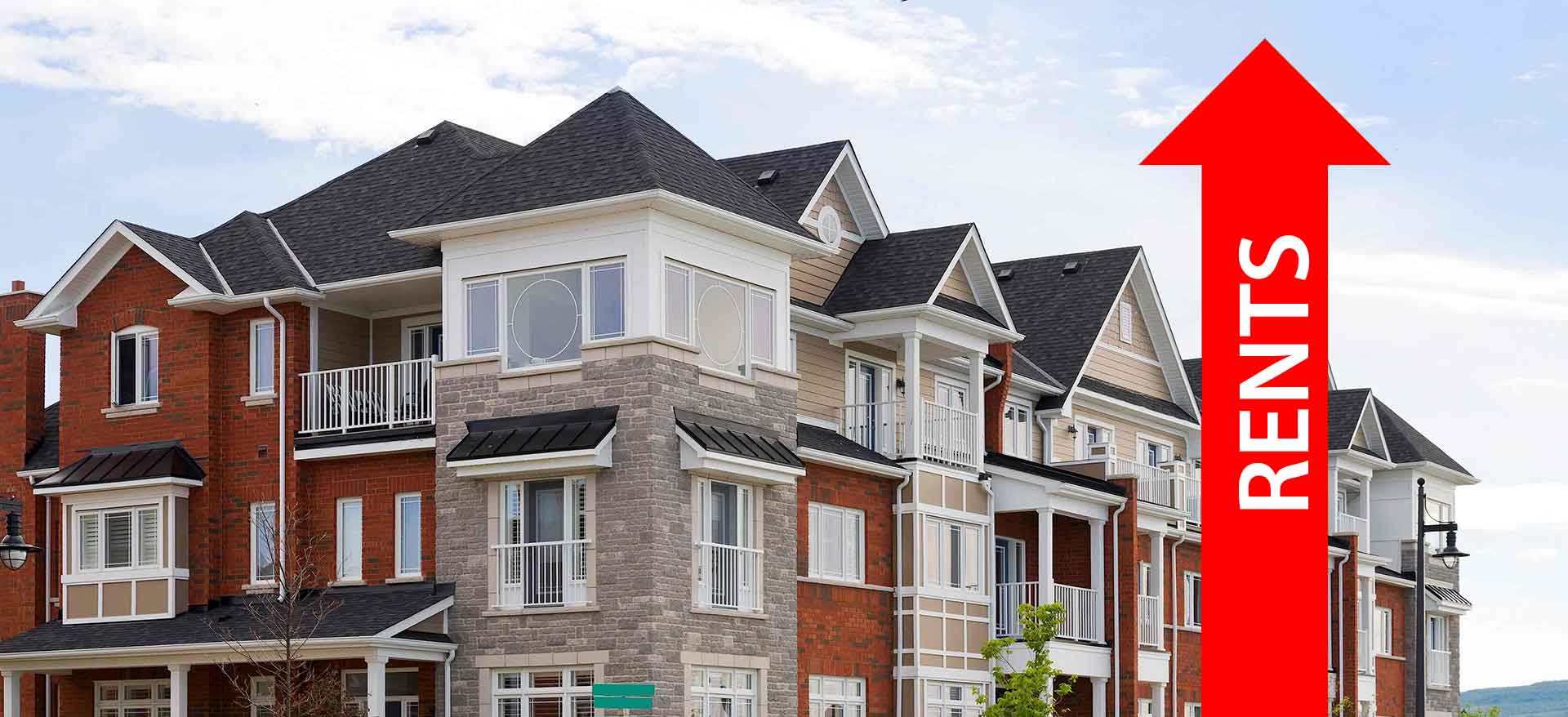Why Rental Property Investors Need to Increase Rents by 33%


At first glance, this title might sound like crazy talk with crazy implications. But don’t forget that we’re living in crazy times — the market is on fire right now, yet multifamily assets could be about to drop. That means paying out for them could lead to trouble. Here’s what you need to know about the current situation and how to act on it.
Ultimately, the biggest takeaway message from this article is that we could be about to face cap rate decompression — meaning new investors will require higher returns as an incentive to get involved in new real estate opportunities. So, for those who are already invested, assets could be on the verge of a drop.
You can calculate this by dividing a property’s net operating income by the cap rate.
You might be thinking that this formula also applies to types of property other than multifamily real estate, from apartments to hotel businesses. However, it’s worth shining a spotlight on multifamily investments since they’re sometimes touted as an ideal opportunity with minimal downsides.
Although many investors in this area are still making (sometimes significant) profits, there are also some signs that we’re in the midst of a bubble. We could all sit around and hope that inflation alongside low interest rates will make everything better — but a more effective strategy is to raise rents.
The prospect of such a steep increase might sound drastic, but the possibility of cap rate decompression may make it necessary. The higher cap rates go, the lower asset prices will become. Let’s look at this in a little more detail.
The cap rate demonstrates an asset’s rate of return in certain conditions, and the value of an asset moves in inverse proportion. So, if cap rates were around 10% then changed by 1%, an asset’s value would change by 10%.
Recently, cap rates have hovered between 3% to 4% in the multifamily sector. Using the same logic, if cap rates increased from 3% to 4%, an asset’s value would drop by an impressive 25% — meaning an even higher rise in net operating income is necessary. To be precise, an increase in net operating income of 33% by increasing rents would ensure an investor is able to break even.
This kind of rise may be feasible if inflation soars, but if an economic crisis comes instead, the situation becomes very dire indeed.
As is usually the case with situations like these, there are a few caveats to keep in mind. If your operating costs don’t increase as fast as your net operating income, you could be earning more than necessary.
However, even if other costs don’t quite go up by 33%, you can still expect significant rises — especially when it comes to capital and operating expenses. Plus, the labor and materials shortages we’ve experienced recently have caused problems.
In case everything we’ve discussed so far seems too abstract for you to really get your head around, let’s look at the biggest impacts of decompressed rates.
More often than not, high cap rates lead to high interest rates when taking out new debt — that’s a lot for investors to deal with and can sometimes spell collapse
2. Problems with appraisal when refinancing
On a similar note, appraisals are based on cap rates, so higher rates can lead to problems.
3. Need for capital calls
The situation may become so dire that it’s necessary to consider new ventures instead of wasting precious capital on trying to fix what they already have. It’s a hard call to make when you’re in the thick of a situation, however.
4. Lower internal rates of return
Although the internal rate of return (IRR) is a tricky metric to navigate, it’s worth pointing out that cap rate decompression and the consequences that come with it can lower the IRR.
This is due to lower valuations, difficulty selling over the short term or refinance, and reduced cash flow.
Most important of all is making sure that you can avoid the worst consequences.
One way to do that is through taking on somewhat safe debt. Items that come under this category include debt with a low loan-to-value and debt with low rates over the long term.
You can also try to look for assets with greater intrinsic value. Look outside of multifamily investments and consider businesses like mom-and-pop shops, mobile home parks, and self-storage units.
Finally, avoid the real estate sector completely — the stock market is also a risky market, but the U.S. government or money market accounts are safer bets.
Things are changing fast, so investors could do well to keep themselves firmly clued up on what’s happening and ensure they can react quickly. If cap rate decompression continues to be a problem, even a 33% increase in rents for multifamily real estate shouldn’t be considered a drastic move.
Consider a Rental Property Cash-Out Refinance with New City Financial. Save money or get more capital to invest, remodel or simply reward yourself. Explore our fast-funding process, click here to get a Refinance Quote or call us at (855) 848-2862.